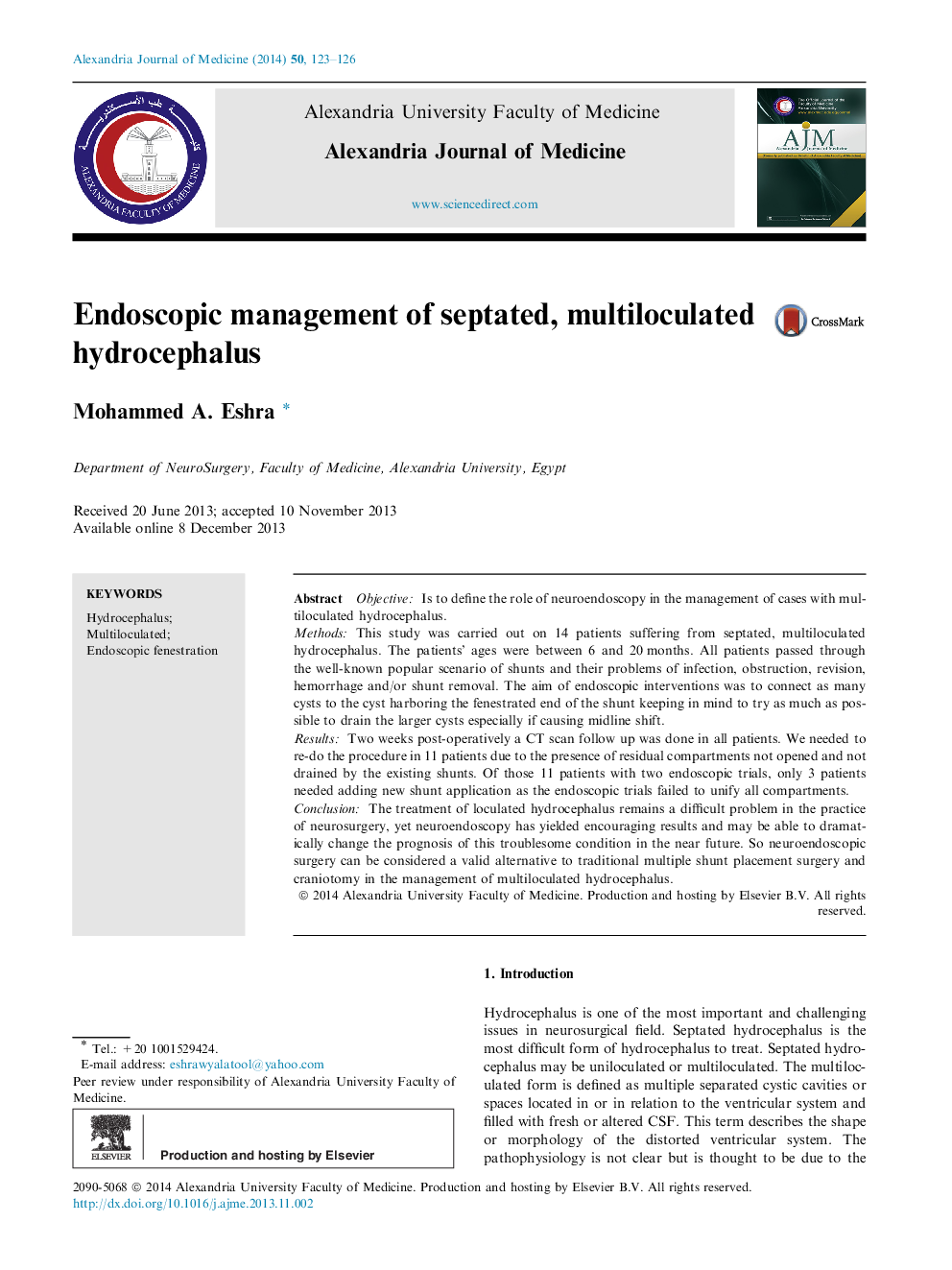| Article ID | Journal | Published Year | Pages | File Type |
|---|---|---|---|---|
| 3431655 | Alexandria Journal of Medicine | 2014 | 4 Pages |
ObjectiveIs to define the role of neuroendoscopy in the management of cases with multiloculated hydrocephalus.MethodsThis study was carried out on 14 patients suffering from septated, multiloculated hydrocephalus. The patients’ ages were between 6 and 20 months. All patients passed through the well-known popular scenario of shunts and their problems of infection, obstruction, revision, hemorrhage and/or shunt removal. The aim of endoscopic interventions was to connect as many cysts to the cyst harboring the fenestrated end of the shunt keeping in mind to try as much as possible to drain the larger cysts especially if causing midline shift.ResultsTwo weeks post-operatively a CT scan follow up was done in all patients. We needed to re-do the procedure in 11 patients due to the presence of residual compartments not opened and not drained by the existing shunts. Of those 11 patients with two endoscopic trials, only 3 patients needed adding new shunt application as the endoscopic trials failed to unify all compartments.ConclusionThe treatment of loculated hydrocephalus remains a difficult problem in the practice of neurosurgery, yet neuroendoscopy has yielded encouraging results and may be able to dramatically change the prognosis of this troublesome condition in the near future. So neuroendoscopic surgery can be considered a valid alternative to traditional multiple shunt placement surgery and craniotomy in the management of multiloculated hydrocephalus.
